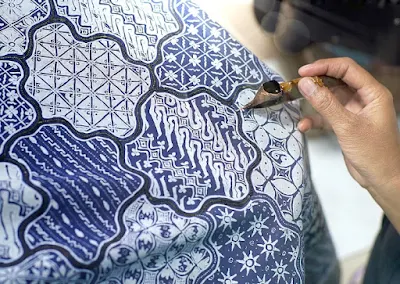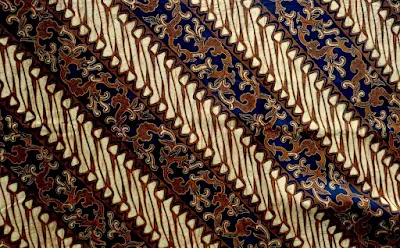The Long and Memorable Historical Journey of Indonesian Batik
One element of Indonesian culture is batik which has very valuable historical value. Everyone should know the history of Indonesian batik. Because batik was used even before the name Indonesia existed. This is proven by the wearing of batik clothing during the royal period.
Meanwhile, the name Indonesia was formed from various very long historical sequences, then its peak was in the mid-19th century. The kingdom period used batik clothing since the 17th century. Namely, it was recorded from the time of the Majapahit kingdom and was written on white cloth for personal use.
Gradually wearing batik clothes also became known to other kingdoms starting from Mataram, Demak, and other kingdoms after Majapahit. Then make batik a noble cultural symbol. The proof is that even now batik still exists in dignified formal affairs and events.
Batik continued to develop, especially on the island of Java in the 18th century, and then in the early 19th century, this art was already known throughout Indonesia. Until that time, the known technique for drawing batik was still limited to dripping on white cloth using heated wax.
On this occasion, Asterokid will discuss priceless history. It is a world cultural heritage with unforgettable travel and historical value.
 |
| The Long and Memorable Historical Journey of Indonesian Batik |
History of Batik Names and Early Drawing Techniques
Batik art historically emerged and spread widely from the island of Java, Indonesia. This refers to the naming, that the word "batik" comes from two Javanese words. The two words are "Amba" and "Titik" which respectively mean cloth and dot. This definition also answers the initial techniques for depicting batik.
Yes, batik was originally drawn on plain white cloth. Then use heated wax to cover several parts of the cloth. When the white cloth is immersed in dye, the parts covered by the wax will not be colored.
Therefore, the combination of all of them produces a unique and interesting pattern. The initial form of depiction technique was nothing other than simple patterns. Regarding the history of Indonesian batik, it cannot be separated from the historical elements of kingdoms. Because the initial patterns are the shapes of temples, mountains, and clouds.
Likewise with the process of making colors in batik. The color liquid is taken from natural plants in Indonesia, for example, the wood of the Noni tree and Soga Tingi. As time goes by, globalization and faster exchange of information, technology also develops. More batik can be produced in a faster time.
The emergence of stamped batik and printed batik
It cannot be denied that the historical development of Indonesian batik has been very rapid over time. The appearance of stamped batik and printed batik is based on how they are made. Hand-written batik artists are decreasing and the processing process is taking a long time. Apart from that, the price of written batik is very expensive because it has an individual value that will never be the same.
For this reason, today there are several batik printing techniques known. Starting from written batik which maintains the authenticity of batik craftsmanship, stamped batik which uses patterned iron plates, as well as printed batik companies with mass production.
1. Handwritten Batik
Written batik is made manually by individual artists. This means that this type of batik is not mass-printed, because it will not have the same pattern. Most hand-written batik motifs are types of beautiful abstract images. The color of the outer and inner fabric is the same because the coating is done twice by human hands.
2. Batik Stamp
Printed stamped batik is a more modern process for making batik motifs. Still uses liquid wax, but the printing process uses patterned iron plates. Therefore, the main characteristic of stamped batik is that it has a standard, regular, and repetitive pattern.
3. Patik Print
Printed batik is the newest technology that is used and produced the most. A real example of using printed batik is school uniforms. Because it is printed by a machine, of course, the pattern formed is always neat and precise. Moreover, it is priced cheaper than the two types of batik above.
The various types of batik in Indonesia are now developing not only in the realm of clothing fashion. But also wallets, bags, hats, and other things including applied objects that have this motif. Anyone can find batik motifs easily because this cultural element still exists and is in demand today.
Indonesian Batik in Various Regions
 |
| Indonesian batik |
Indonesia is a country rich in culture, therefore batik motifs in various regions are different. Each batik depiction has unique characteristics. On October 2, 2009, the United Nations Educational, Scientific and Cultural Organization (UNESCO) designated batik as Indonesian heritage.
On the same date, it was also designated as National Batik Day or Batik Day. Even though it has many definitions, various patterns, and long origins and history, batik still belongs to Indonesia.
The media used for batik now is not only white cloth (mori cloth), but has developed from cotton cloth, silk cloth, rayon, and so on. Meanwhile, there are a lot of batik-producing areas, all over Indonesia, with their characteristics.
Just take the example of Yogyakarta, Solo, Pekalongan, Tulungagung, and so on. To make grouping easier, batik is divided into islands, such as Kalimantan Batik, Sumatran Batik, Papuan Batik, Balinese Batik, and many others.
Each batik motif or pattern has its name, Sekar Jagad batik in Yogyakarta, Kartini or Jepara batik in Jepara, Sidomukti batik in Magetan, Kawung motif, Mega Mendung, Pringgondani, Tambal, as well as various batik motifs and names in various regions throughout Indonesia.
Facts about Indonesian Batik which is worldwide
From the explanation above, there is no doubt that batik has become an Indonesian heritage that is recognized by the world as something noble by looking at the history of Indonesian batik from time to time. Apart from that, there are still facts that emerge based on this historical journey. The following are some facts about batik.
- It has been traditional Javanese clothing since the Hindu era, as evidenced by carvings from the Hindu-Buddhist era which use batik motifs.
- Batik played a role in the spread of Islam in Indonesia through the kings.
- At first it was exclusive clothing that could only be enjoyed by the royal court, but gradually it could be worn by followers and anyone.
- Has many various definitions.
- Becomes a motif that is inscribed on many objects (not just clothes).
- Based on developments, batik is produced by handwriting, printing, and printing.
- Has a variety of different pattern designs in each region.
- Received recognition from UNESCO as Indonesian heritage, more precisely Humanitarian Heritage for Oral and Intangible Culture on October 2, 2009.
- Initially used natural dyes and not synthetic.
- It was claimed by a neighboring country.
These are some explanations regarding the long journey of Indonesian batik. For more detail and completeness, you can find books that explain batik. Because there are many versions that actually represent the rich culture of this country. Understanding the history of Indonesian batik is an act of honoring this heritage.

